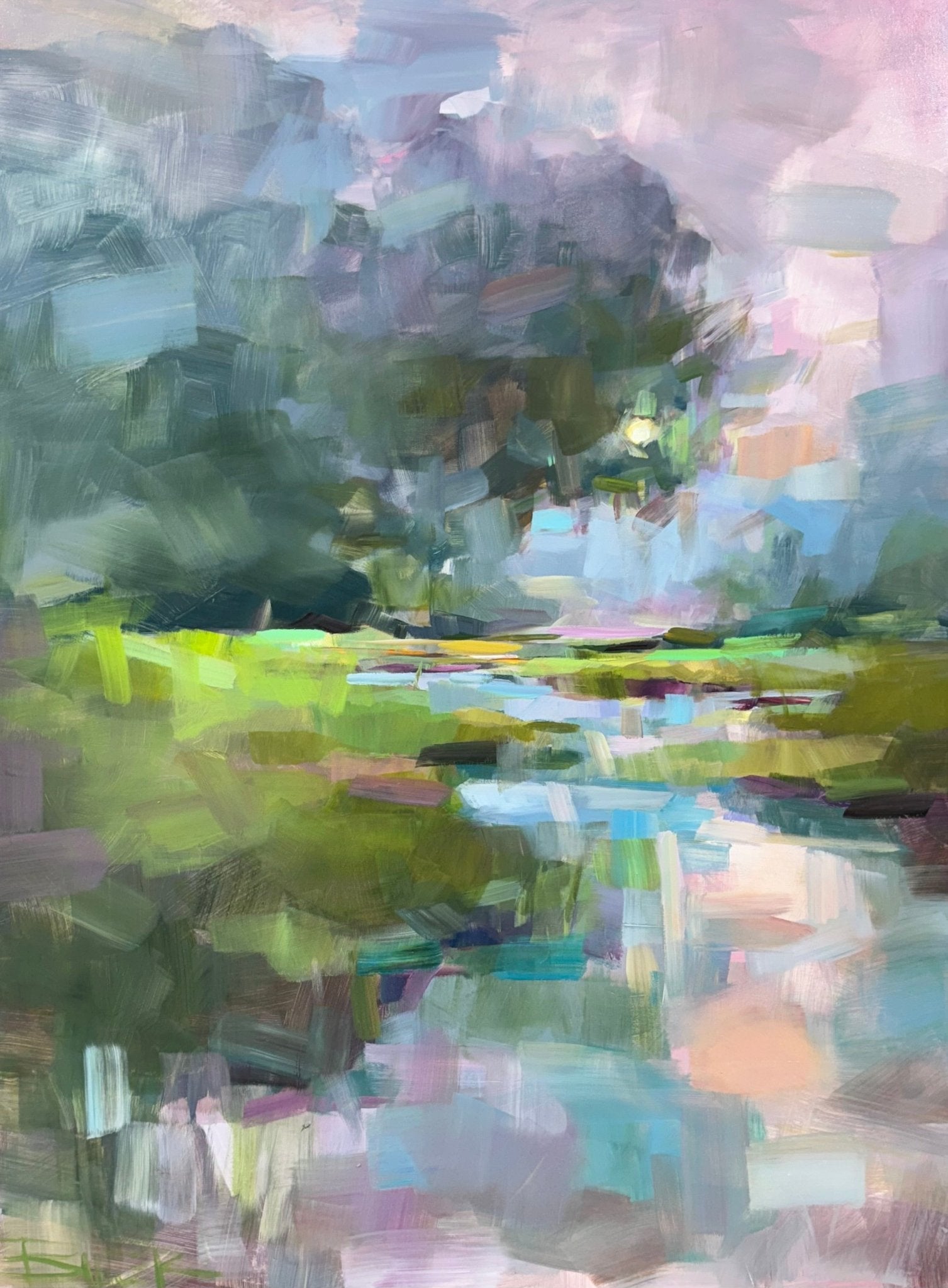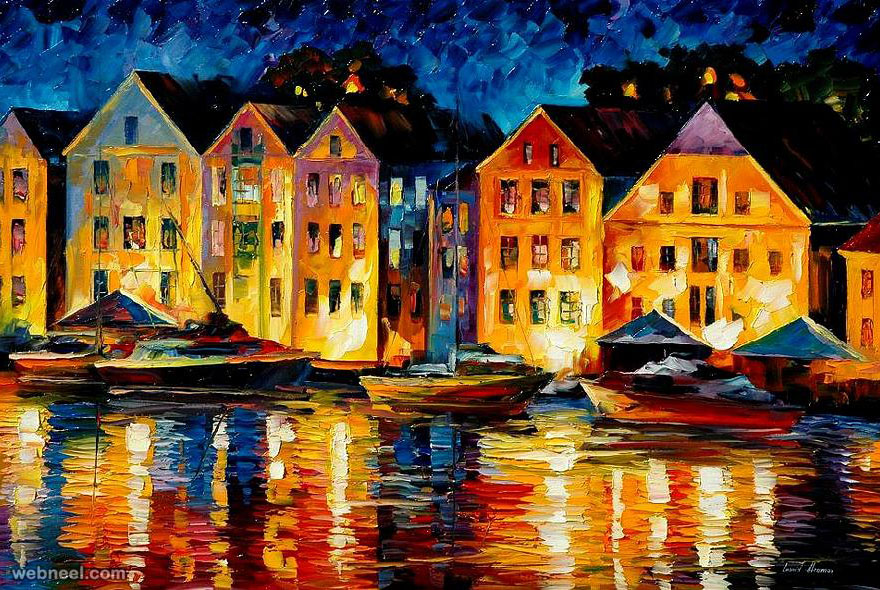Budget-Friendly Contemporary and Traditional Oil Paintings for Sale
Budget-Friendly Contemporary and Traditional Oil Paintings for Sale
Blog Article
Exploring Everything About Oil Paints: An Overview to Recognizing Their Appeal and Worth
Oil paintings have actually astounded target markets for centuries, supplying a look right into the creative mastery of various eras. Their abundant history is intertwined with innovative methods and profound psychological expression. Recognizing the products and methods behind these artworks can enhance recognition. Furthermore, the market for oil paints offers chances for collectors and investors alike. As one discovers this fascinating globe, the question occurs: what makes an oil paint genuinely beneficial?
The Background of Oil Painting: A Trip With Time
Oil painting has origins that date back to ancient times, it truly prospered during the Renaissance, when musicians discovered its convenience and rich shade potential. Early instances can be mapped to the 7th century, with techniques evolving especially across cultures. The tool became noticeable in Northern Europe in the 15th century, especially via the works of artists like Jan van Eyck, that pioneered its use for thorough realistic look and vibrant colors. This period marked a departure from tempera paints, permitting for greater depth and appearance. As oil painting spread, it influenced countless artists, bring about work of arts by renowned figures such as Leonardo da Vinci and Rembrandt. The tool's heritage continues, shaping the art world well into modern-day times.
Recognizing Oil Repaints: Materials and Techniques
As musicians discover the globe of oil paints, they encounter a diverse array of products and strategies that specify this medium. The main parts of oil paint include pigments, which offer shade, and drying out oils, such as linseed, that bind the pigments and promote application. Various ingredients can modify the paint's structure and drying time, enhancing flexibility. Methods like glazing, where clear layers are built up, and impasto, which involves applying thick paint, enable for different visual impacts. Furthermore, making use of brushes, scheme blades, and also fingers can develop one-of-a-kind textures and finishes. Understanding these materials and techniques enables artists to fully share their creative thinking and achieve the desired influence in their art work.
The Duty of Shade in Oil Paints
Color plays a critical role in oil paints, affecting both visual allure and psychological resonance. Understanding shade theory essentials, including the connections between tones, can improve an artist's capacity to communicate mood and ambience. Furthermore, understanding color blending methods enables better depth and splendor in a painting's palette.

Color Theory Basics
Understanding color theory is important for artists working with oil paints, as it creates the structure for producing harmonious and visually engaging structures. Color theory includes the research of how shades connect, the shade wheel, and the connections between main, second, and tertiary shades. Artists make use of corresponding shades to improve contrasts and develop prime focus, while analogous colors promote unity and cohesiveness within an item. Furthermore, the principles of warm and amazing shades influence the understanding of deepness and space in a paint. Realizing these concepts permits musicians to manipulate shade properly, directing the visitor's eye and connecting their intended message. Proficiency of shade concept ultimately enhances a musician's ability to communicate feelings and ideas with their job.
Emotional Impact of Shade
The psychological impact of color in oil paints plays an important duty in how audiences regard and connect with artwork. Shades stimulate details feelings and moods, affecting the visitor's emotion. Warm tones like reds and oranges can develop a feeling of heat and energy, while trendy tones such as blues and greens typically evoke calmness or self-questioning. Artists purposefully pick shade schemes to improve narrative aspects, assisting the target market's emotional trip. The saturation and comparison of colors even more enhance these effects, drawing attention and creating emphasis. Eventually, the interplay of colors in oil paints not just improves their visual allure yet additionally offers as an effective tool for emotional expression, enriching the customer's experience and analysis.
Color Mixing Techniques
While several facets of oil painting contribute to the total make-up, understanding shade blending techniques is crucial for achieving wanted results and deepness. Shade mixing can be approached through various methods, consisting of the subtractive and additive procedures. Additive mixing involves combining shades of light, while subtractive blending counts on pigments, where colors mix to produce new tones. Artists frequently use a restricted combination to create unified jobs, comprehending the connections between key, second, and tertiary colors. Strategies such as glazing and scumbling better boost depth and luminance. By skillfully blending colors, an artist can stimulate emotions, develop prime focus, and achieve a sense of realism, eventually elevating the painting's psychological and aesthetic influence.
Famous Oil Painters and Their Iconic Works

Famed for their mastery of color and method, oil painters have actually produced several of one of the most well known artworks in history. Distinguished musicians like Vincent van Gogh mesmerized target markets with his stirring brushwork in "Starry Evening," while Claude Monet's "Perception, Sunup" prepared for Impressionism. Leonardo da Vinci's "Mona Lisa" continues to be a long-lasting symbol of creative genius, showcasing his ability in capturing human expression. Rembrandt's "The Evening Watch" illustrates his ingenious use of light and darkness. Other significant numbers consist of Pablo Picasso, that reinvented contemporary art with his strong testing in works like "Les Demoiselles d'Avignon," and Georgia O'Keeffe, whose vibrant depictions of blossoms and landscapes helped specify American innovation. Each artist's distinct style added greatly to the oil paint landscape.
Exactly how to Review the High Quality of an Oil Paint
Examining the high quality of an oil painting entails a mindful evaluation of craftsmanship techniques, along with an analysis of color and make-up. Observing brushwork, layering, and the application of paint can reveal the artist's skill level. Furthermore, the interplay of colors and the overall arrangement of components add substantially to the paint's visual worth.
Evaluating Craftsmanship Methods
A careful evaluation of workmanship strategies is crucial for establishing the top quality of an oil painting. Evaluators need to initially analyze the application of paint; thick, textured brushstrokes might suggest a competent hand, while overly consistent applications might indicate an absence of depth. oil paintings for sale. The layering technique is additionally crucial; the presence of lusters and varied thickness can boost brightness and complexity. In addition, the high quality of the products utilized, such as the canvas and pigments, plays a significant duty in toughness and general visual. Interest to detail in elements like sides and shifts between shades shows the artist's commitment to their craft. Ultimately, these techniques contribute to the paint's psychological impact and market value, working as indications of the musician's skill and intent
Evaluating Shade and Make-up
While assessing the high quality of an oil paint, one should focus on the interaction of shade and make-up, as these components are basic to the artwork's total effect. Color options can evoke feelings and develop mood; as a result, the musician's palette ought to be checked out for consistency and comparison. A healthy composition directs the audience's eye and produces a sense of unity. Artists typically use methods like the regulation of thirds or leading lines to improve aesthetic interest. Additionally, the use of light and shadow can add depth, boosting the three-dimensionality of the paint. Inevitably, an effective oil painting marries shade and oil paintings for sale composition, involving the visitor and welcoming a much deeper recognition of the artist's vision and method.
Caring for and Preserving Oil Paintings
Proper treatment and conservation of oil paints is necessary for preserving their honesty and longevity. To protect these artworks, it is important to show them far from straight sunshine, which can cause fading and staining. Keeping a steady environment with regulated temperature level and moisture additional help in preventing damages. Cleaning up ought to be done gently making use of a soft, completely dry fabric, staying clear of any kind of harsh chemicals that could harm the paint or varnish. Regular examinations for indicators of damage, such as breaking or flaking, are advisable. When storing or moving oil paints, appropriate cushioning and framing are necessary to stay clear of physical injury. Inevitably, thorough care adds to the aesthetic charm and value of oil paints with time.
The Market for Oil Paintings: Gathering and Investing
Recognizing the market characteristics for oil paints is vital for collectors and financiers alike. The value of these art work is influenced by numerous factors, including the artist's track record, historical significance, and present trends. Enthusiasts typically look for items that resonate directly while taking into consideration potential recognition in worth. Public auctions and galleries act as primary locations for trading, with prices changing based upon demand and rarity. Buying oil paintings needs research into the market, along with an understanding of credibility and provenance. Additionally, emerging artists may offer chances for significant returns, while established names can regulate high prices. Generally, a calculated approach to accumulating can yield both aesthetic pleasure and financial rewards.

Frequently Asked Questions
What Are the Environmental Influences of Oil Paint Materials?
The ecological effects of oil paint products consist of the launch of unpredictable organic compounds (VOCs), unsafe waste generation, and resource removal for pigments. These variables contribute to pollution and eco-friendly destruction, raising problems among eco conscious musicians and consumers.
Exactly How Do Various Canvases Impact Oil Paint Results?
Various canvases influence oil painting results considerably. Structure, surface, and absorbency high quality can modify paint application, drying out times, and color vibrancy. Musicians usually choose details canvases to accomplish desired effects and boost their imaginative expression.
Can Oil Paintings Be Recovered if Damaged?
Oil paintings can certainly be brought back if harmed. Expert conservators make use of numerous techniques to repair splits, clean surface areas, and address staining, ensuring that the artwork maintains its initial beauty and value for future generations.
What Are the Signs of an Original Oil Painting?
The indications of an original oil painting include visible brush strokes, structure variants, and an unequal canvas weave (oil paintings for sale). Furthermore, credibility might be validated through provenance, trademarks, and the existence of a varnish layer distinct to oil tools
Exactly How Has Technology Influenced Modern Oil Paint Techniques?
Technology has actually considerably influenced contemporary oil paint methods by presenting digital devices for planning, improved materials for appearance and long life, and on-line systems for sharing and marketing art, consequently broadening artists' creative possibilities and target market get to. Oil painting has roots that date back to old times, it absolutely prospered throughout the Renaissance, when artists discovered its versatility and abundant shade capacity. The emotional influence of shade in oil paintings plays an important role in how visitors connect and regard with art work. While numerous aspects of oil paint add to the overall make-up, grasping color blending methods is important for attaining preferred effects and deepness. Examining the quality of an oil paint includes a cautious analysis of workmanship methods, as well as an evaluation of color and structure. While reviewing the top quality of an oil painting, one must focus on the interplay of color and structure, as these aspects are essential to the art work's overall influence.
Report this page